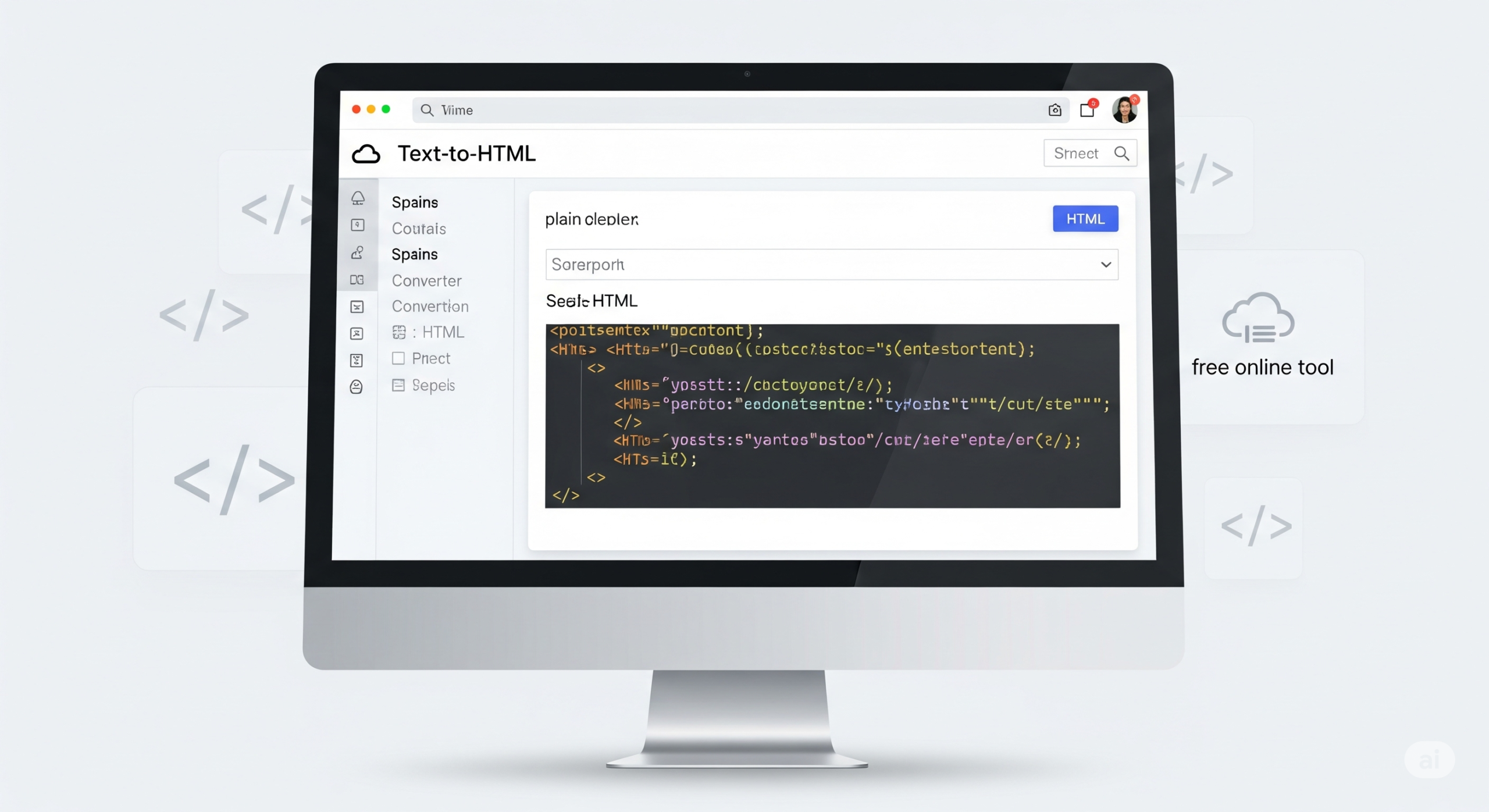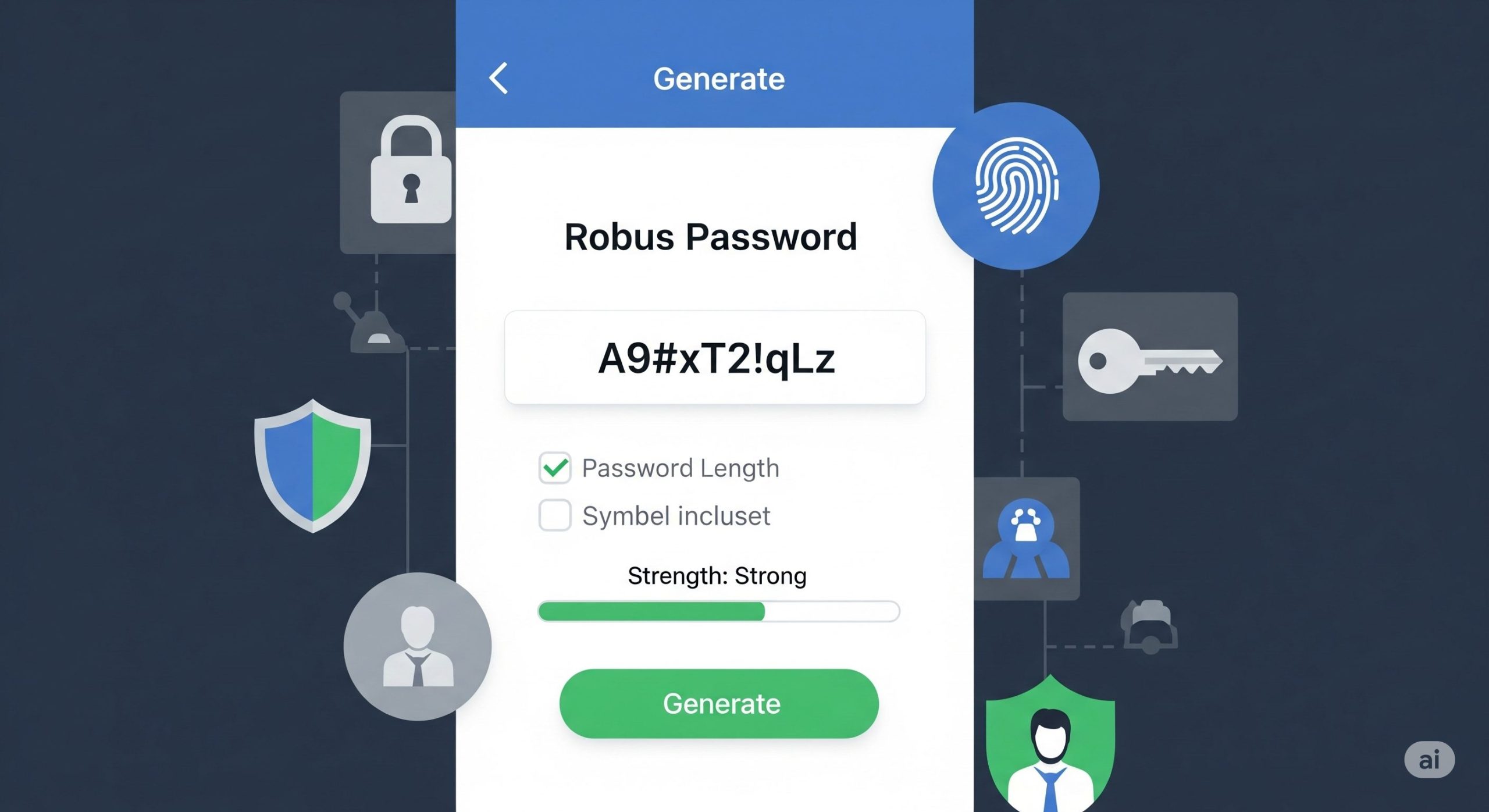Have you ever found yourself staring at a wall of plain text, knowing you have to manually wrap every single paragraph in <p> tags? Or painstakingly adding <br> for every line break? It’s a tedious, soul-crushing task that’s prone to errors. One missed closing tag, one misplaced character, and your entire webpage layout can break.
For content creators, bloggers, email marketers, and even developers, this manual grind is a significant bottleneck. It’s time better spent on what truly matters: creating compelling content, engaging with your audience, or solving complex coding problems.
What if there was a way to bypass this process entirely? A way to take your beautifully written text and, with a single click, transform it into perfectly structured, clean, and ready-to-use HTML code?
That’s precisely why we built this powerful and intuitive Text To HTML Converter. It’s more than just a tool; it’s a productivity machine designed to streamline your workflow and eliminate the frustrations of manual HTML coding forever. In this comprehensive guide, we’ll explore everything you need to know about converting text to HTML and how our free online tool is the ultimate solution for the job.

What is HTML, and Why Does Clean Code Matter?
Before diving into the magic of our converter, let’s establish a solid foundation. What exactly is HTML?
HTML stands for HyperText Markup Language. It’s the standard language used to create and structure content on the World Wide Web. Think of it as the skeleton of a webpage. It uses various “tags” to tell the web browser how to display text, images, links, and other elements.
For example:
<p>This is a paragraph.</p>creates a paragraph.<h2>This is a heading</h2>creates a level-2 heading.<br>creates a line break.
So, why is “clean” HTML so important?
- Browser Consistency: Clean, valid HTML ensures that your webpage looks and functions as intended across all different browsers (Chrome, Firefox, Safari, etc.). Messy code can be interpreted differently by each browser, leading to a broken or inconsistent user experience.
- SEO (Search Engine Optimization): Search engines like Google use bots (or “crawlers”) to read the HTML of your site to understand its content and structure. Clean, semantic HTML helps these bots understand your content’s hierarchy and meaning, which can positively impact your search rankings.
- Accessibility: Well-structured HTML is crucial for web accessibility. It allows screen readers and other assistive technologies to navigate your content logically, making your website usable for people with disabilities.
- Maintainability: For developers and content managers, clean code is infinitely easier to read, debug, and update in the future.
Manually ensuring your code is clean can be a challenge. That’s where a reliable Text To HTML Converter becomes an indispensable asset.
The Nightmare of Manual Conversion
Let’s be honest. Converting plain text to HTML by hand is a recipe for disaster. Here are just a few of the common pain points that our tool is designed to solve:
- It’s Incredibly Time-Consuming: The process of adding tags to every paragraph, list item, and line break is monotonous and slow. For a long article, this can add hours to your workflow.
- It’s Error-Prone: Humans make mistakes. Forgetting a closing
</p>tag, using a<instead of a>, or messing up special character encoding are common errors that can break your page. Finding these tiny mistakes in hundreds of lines of code is a frustrating game of digital hide-and-seek. - Handling Special Characters: What happens when your text includes characters like
&,<, or>? In HTML, these have special meanings. They need to be converted into “HTML entities” (&,<,>) to be displayed correctly as text. Forgetting to do this can lead to the browser misinterpreting your code. - Inconsistent Formatting: When working in a team, ensuring everyone formats HTML the same way is a challenge. A good converter enforces a consistent, clean output every single time.
These challenges highlight a clear need for a better way—a way that is fast, accurate, and effortless.
The Solution: A Powerful, Free Online Text To HTML Converter
Our Text To HTML Converter was engineered from the ground up to address every one of these pain points. It’s a robust, feature-rich tool that provides a seamless bridge between your raw text and polished, professional HTML.
Here’s what makes it stand out:
- Instantaneous Conversion: Simply paste your text into the input box, and the tool generates clean HTML in real-time. There’s no waiting, no processing delays.
- Live Preview: This is a game-changer. As you type or edit your text, you can see a live-rendered preview of how it will look on a webpage. This allows you to catch formatting issues instantly without having to copy-paste the code into a test environment.
- Smart Conversion Options: We understand that not all content is structured the same. That’s why we offer two primary conversion modes:
- Use Paragraphs (
<p>): This is the standard for most web content. The tool intelligently identifies blocks of text separated by blank lines and wraps each one in<p>tags. This is the best option for SEO and semantic structure. - Use Line Breaks (
<br>): Sometimes, you just need to preserve the exact line breaks from your source text, such as in poetry or a mailing address. This option replaces each newline character with a<br>tag.
- Use Paragraphs (
- One-Click Copy: Once your code is generated, a single click on the “Copy HTML” button is all it takes to get the code onto your clipboard, ready to be pasted into your CMS, email client, or code editor.
- Clean & Simple Interface: No clutter, no ads, no distractions. The tool features a modern, intuitive design with a delightful Dark Mode option for those late-night work sessions.
- Multi-Language Support: The interface is available in multiple languages, making it accessible to users from all over the world.
This isn’t just a text to html code generator; it’s a complete workflow enhancement tool.
How to Use Our Text To HTML Converter: A Simple Guide
Getting started is as easy as 1-2-3.
- Input Your Text: Navigate to the converter. You’ll see a large input area on the left. You can either type directly into this box or, more commonly, copy your text from a document (like Word, Google Docs, or a plain text file) and paste it in.
- Choose Your Conversion Option: Just above the main content area, you’ll find the conversion options.
- Select “Use Paragraphs (
<p>)” for standard articles and blog posts. This is the recommended setting for 99% of use cases. - Select “Use Line Breaks (
<br>)” if you need to maintain specific line-by-line formatting.
- Select “Use Paragraphs (
- Review and Copy the HTML: As soon as you input text, two things happen instantly on the right side of the screen:
- The HTML Code Box: This shows you the raw, clean HTML that has been generated.
- The Live Preview Box: This shows you what that code will look like when rendered in a browser.
If everything looks good, simply click the “Copy HTML” button. That’s it! The code is now ready to be pasted into WordPress, Elementor, Shopify, an HTML email template, or any other platform that accepts HTML.
Pro Tip: Use the “Clear All” button to instantly reset the tool and start fresh with a new piece of text. The built-in character and word counters are also handy for a quick analysis of your content length.
Advanced Use Cases: Who is this Tool For?
While anyone can benefit from a Text To HTML Converter, it’s a true lifesaver for specific professionals.
For Bloggers and Content Marketers
If you use a CMS like WordPress, you’re familiar with the Visual and Text (or Code) editors. Sometimes, pasting directly from Google Docs or Word into the Visual editor can bring over messy, inline styling that bloats your code and can break your site’s design.
The Pro Workflow:
- Write your content in your preferred editor (Google Docs, etc.).
- Copy the final text.
- Paste it into our Text To HTML Converter.
- Copy the clean HTML output.
- Paste this clean code directly into the Text/Code editor of your CMS.
This ensures your article is built on a foundation of clean, semantic HTML, free from any junk styling. This is especially useful for those using page builders like Elementor, where pasting clean HTML into a ‘Text Editor’ or ‘HTML’ widget gives you maximum control.
For Email Marketers
HTML for email is notoriously tricky. Different email clients (Gmail, Outlook, Apple Mail) render HTML in their own unique, often frustrating, ways. The one constant is that they prefer simple, clean, and often table-based or paragraph-based layouts. Pasting complex code can lead to your beautiful email looking like a jumbled mess in Outlook.
By using a plain text to html converter, you can generate simple <p> and <br> based code that is far more likely to render consistently across all email clients.
For Web Developers
Even seasoned developers need to convert text to HTML quickly. Whether it’s for mocking up a content section, creating a quick static page, or converting a client’s Word document into a basic web page, this tool saves valuable time. Instead of manually formatting the text, a developer can generate the base HTML in seconds and then focus on the more complex aspects of styling and functionality.
The Hidden SEO Benefits of Using a Text To HTML Converter
We’ve mentioned that clean code is good for SEO, but let’s dig deeper. How does using a Text To HTML Converter specifically contribute to better search rankings?
- Improved Crawlability: Search engine bots have a “crawl budget” for your site. The easier and faster they can read and understand your code, the more pages they can index. Clean, lightweight HTML generated by our tool is much faster for them to process than bloated, messy code.
- Correct Semantic Structure: Using
<p>tags for paragraphs is not just a visual choice; it’s a semantic one. It tells Google, “This is a distinct block of thought or information.” This helps the search engine understand the structure and context of your content, which is crucial for ranking for relevant queries and for being featured in rich snippets (like “People Also Ask”). Choosing the “paragraphs” option in our converter automatically enforces this best practice. - Reduced Errors: The Google Search Console reports on errors found on your site. HTML errors, while often minor, can sometimes hinder a crawler’s ability to properly parse a page. By generating valid code every time, our tool helps minimize the risk of such errors appearing in your reports.
- Faster Page Load Speed: While the HTML itself is a small part of page load time, bloated code with unnecessary inline styles (a common side effect of pasting from Word) adds to the page’s overall weight. A clean html generator ensures your code is as lean as possible, contributing positively to your Core Web Vitals and overall page speed—a confirmed ranking factor.
In short, consistently using a tool like this is a simple but effective step in a robust technical SEO strategy.
Your Go-To Tool for Flawless Content Creation
In today’s fast-paced digital world, efficiency and quality are paramount. You can’t afford to waste time on tedious manual tasks or risk publishing content with broken formatting.
The Text To HTML Converter is more than a utility; it’s a commitment to a smarter, faster workflow. It empowers you to focus on your creative and strategic goals, confident that the technical foundation of your content is solid, clean, and professional.
Whether you’re a blogger crafting your next viral post, a marketer designing a high-conversion email campaign, or a developer building the next great website, this tool is designed for you. It’s free, it’s online, and it’s ready to become an essential part of your digital toolkit.
Ready to transform your workflow? Try our Text To HTML Converter now and experience the difference for yourself!
Frequently Asked Questions (FAQ)
What exactly does a Text To HTML Converter do?
https://schema.org/Answer”>
A Text To HTML Converter is an online tool that automatically transforms plain text (like you’d write in a simple text editor or email) into structured HTML code. It typically wraps paragraphs in <p> tags or converts single line breaks into <br> tags, making the text ready for use on a website, blog, or in an HTML email without manual coding.
Is this online HTML converter completely free to use?
Yes, absolutely. Our tool is 100% free to use with no limitations, no sign-ups, and no ads. Our goal is to provide a high-quality, accessible utility for content creators and developers to improve their workflow.
Is my data safe when using this tool?
Yes, your data is safe. All conversion processing is done directly in your browser (client-side). No text you enter is ever sent to or stored on our servers. Your privacy is fully protected.
What’s the difference between “Paragraphs” and “Line Breaks” mode?
Paragraphs (&lt;p&gt;) mode</b> is best for standard text like articles and blog posts. It treats a block of text separated by a blank line as a distinct paragraph and wraps it in <code><p>…</p></code> tags. This is semantically correct and better for SEO.</p> <p><b>Line Breaks (&lt;br&gt;) mode is for when you need to preserve every single line break, such as in poetry, song lyrics, or a physical address. It inserts a <br> tag at the end of each line.
Can I use this to convert a Microsoft Word or Google Docs file to HTML?
Yes, and this is one of its best uses! Instead of using Word’s “Save as HTML” feature, which creates very messy code, simply copy the text from your Word or Google Doc, paste it into our Text To HTML Converter, and you will get a perfectly clean and lightweight HTML version of your content.
How does a clean html generator help with SEO?
A clean HTML generator helps SEO in several ways: 1) It creates lightweight code that helps improve page load speed. 2) It uses proper semantic tags (like <p>), which helps search engines understand your content’s structure and context. 3) It reduces the risk of crawling errors that can occur with messy or invalid code. All of these factors contribute to better technical SEO and can positively influence your search rankings.


